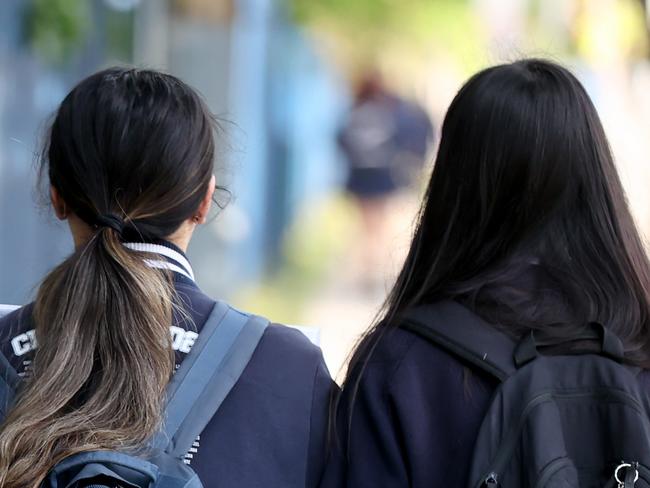School retention rates reach lowest point in a decade amid mental health crisis
More students are dropping out of secondary school in Victoria than at any time in the past 10 years, and experts say poor mental health following Covid lockdowns could be to blame.
Advice
Don't miss out on the headlines from Advice. Followed categories will be added to My News.
More students are dropping out of school in Victoria than at any point in the past decade, with experts saying more needs to be done to care for high school students’ mental health in the wake of the pandemic.
Retention figures, released this month as part of the Australian Bureau of Statistic’s February School Census, show 14.1 per cent of students who started year 7 at Victorian schools in 2018 had dropped out of school by the start of year 12.
The figure is the worst in a decade, and is almost double the drop out rate recorded in 2018.
While Catholic schools continued to have the worst retention figures, the data reveals the statewide trend was driven by an increasing number of students dropping out of government and independent schools.
In the state’s southwest, 20 per cent of students are dropping out of school before year 12.
Victorian Student Representative Council chief executive Julia Baron said she was not surprised by the data.
“Our research over this year has highlighted the ongoing challenges that all schools are facing in terms of re-engaging students into in person learning post Covid,” she said.
“Students themselves have reflected upon the difficulties they’ve experienced re-engaging including mental health and teacher shortages, which is also having an impact.

“What we’ve heard from students, particularly this year, is that mental health and wellbeing needs are actually continuing to increase.
“The system is not keeping up with the demand, meaning students have nowhere to go because there is not enough (mental health services) in schools and they are also at capacity in the community as well.”
Portland’s Bayview College principal Dr Michelle Kearney said she expected there would be “ripple effects” from the pandemic for another decade.
“It’s probably now more situational than across a whole sector … students from families who might have had some school disengagement, their results have not really improved or declined,” she said.
“There has to be a new lens focusing on the needs of the regional community in terms of both education and health.”
“Our enrolments are up for 2024, which is a very positive thing.”
Left and Right Counselling youth mental health expert Daniel Lennon said more young people struggling with their mental health were quitting school with no plans to work or enrol in other studies.
“The mental health of young people in Australia is largely being overlooked,” he said.
Mr Lennon said isolation and anxiety were driving factors behind a young person’s mental health, which if not treated can “turn into school refusal and workplace avoidance”.

Youth Enterprises Australia general manager of programs Kumari Fernando also backed calls for the government to invest more into comprehensive support systems.
“A holistic approach is essential to create an educational landscape where every student feels valued and supported – without this we risk seeing more young people disengage altogether.”
A department of education spokesman said Victoria has one of the highest year 12 certificate attainment rates in the country.
The spokesman said all government secondary schools and specialist schools had a mental health practitioner.
“Government schools also have access to department-based teams of psychologists, social workers, nurses and speech pathologists who support schools with student mental health, wellbeing and any other needs,” the spokesman said.
Retention rates do not account for students who move interstate, repeated a year, or who transferred to a different school system.




